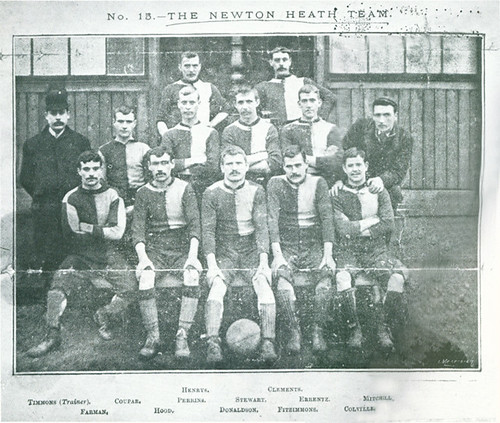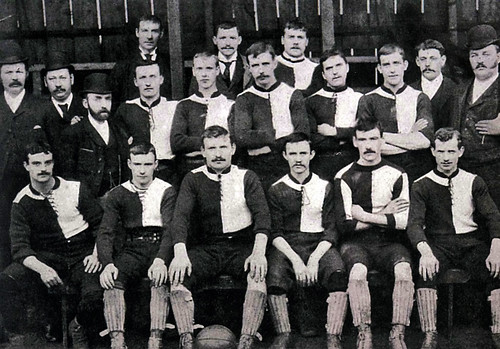After applying several times to enter the Football League, Newton Heath finally got their wish when the League was expanded to two divisions in 1892-93. They were elected to join the First Division, which was to be made up of 16 clubs rather than the 14 it had done previously.
In anticipation of joining the league, the club became a limited company and in reflection of this change, the "L&YR" of the club's name was dropped and official ties with the railway company were severed. 2000 shares of £1 were issued but they were not as popular as had been hoped. In response to this, the railway increased the rent charged for the North Road ground and ended their offer of cheap train travel to players and supporters. The club also hired a secretary for the first time, Alf Albut who had previously been with Aston Villa.
Alan Shury and Brian Landamore's The Definitive Newton Heath states:
“In friendly matches with Football League clubs at the start of the season, Newton Heath lost to Stoke and drew with Bolton Wanderers. The report of the latter game mentions 'Powell and his men in their familiar red and white costumes'. Though Newton Heath are generally known for playing in green and gold shirts, the colours registered with the Football League in 1892 were 'red and white quartered shirts, blue shorts'. By 'quarters' it was meant that the shirts were 'halved' on the front and the back, as can be seen from the group photographs.”
The only photos known to exist from that year are the ones below, and they are probably the most well known photos from the Newton Heath era. It is from these that several retro shirt companies have based their products on... albeit in the wrong colours, it would seem:
In anticipation of joining the league, the club became a limited company and in reflection of this change, the "L&YR" of the club's name was dropped and official ties with the railway company were severed. 2000 shares of £1 were issued but they were not as popular as had been hoped. In response to this, the railway increased the rent charged for the North Road ground and ended their offer of cheap train travel to players and supporters. The club also hired a secretary for the first time, Alf Albut who had previously been with Aston Villa.
Alan Shury and Brian Landamore's The Definitive Newton Heath states:
“In friendly matches with Football League clubs at the start of the season, Newton Heath lost to Stoke and drew with Bolton Wanderers. The report of the latter game mentions 'Powell and his men in their familiar red and white costumes'. Though Newton Heath are generally known for playing in green and gold shirts, the colours registered with the Football League in 1892 were 'red and white quartered shirts, blue shorts'. By 'quarters' it was meant that the shirts were 'halved' on the front and the back, as can be seen from the group photographs.”
The only photos known to exist from that year are the ones below, and they are probably the most well known photos from the Newton Heath era. It is from these that several retro shirt companies have based their products on... albeit in the wrong colours, it would seem:
They had been thought to show the the players in their more famous green and gold, but in fact, these are the aforementioned red and white shirts. It is, of course, possible that they are pictured in change colours (of which there is no record) but the top photograph is thought to have been taken on January 7th, 1893. It was on that day that the Heathens played Stoke away and their goalkeeper, Jimmy Warner, had missed the train. This accounts for why there is no recognised keeper amongst the eleven players (thanks to historian and author Charbel Boujaoude for this information).
The rules at the time stated that all teams should keep a set of white change shirts in case of a colour clash. Also, up until as late as 1921, it was the home team that should wear change shirts in case of a clash. Stoke at the time wore navy and red stripes, so there may not have been a reason for either team to change anyway as the referees were much more lenient about such matters back then.
The rules at the time stated that all teams should keep a set of white change shirts in case of a colour clash. Also, up until as late as 1921, it was the home team that should wear change shirts in case of a clash. Stoke at the time wore navy and red stripes, so there may not have been a reason for either team to change anyway as the referees were much more lenient about such matters back then.





No comments:
Post a Comment